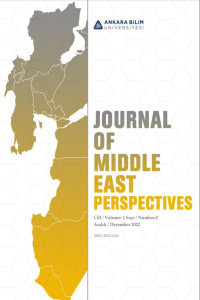Körfez-Güney Asya İlişkilerinin Fırsatları ve Zorlukları
Körfez Arap bölgesi tarihsel olarak hep batılı ülkelerle işbirliğiyle tanınmıştır. Büyük Britanya ve Amerika ile güvenlik ve ekonomik ilişkileri üzerinden derinleşen ilişkiler 2000 sonrası tek yönlülükten çeşitliliğe evrilme emareleri göstermiştir. Bu süreç, Körfez ülkelerinin Asya’da ekonomik ve siyasal olarak yükselişe geçen özellikle Çin ve Hindistan gibi ülkelerin siyasi stratejilerinin ve ekonomik çıkarlarının kesişim noktasında olmasıyla daha da ivme kazanmıştır. Bu sürecin sahip olduğu fırsatları ve zorlukları daha iyi anlayabilmek politik ekonomi perspektifiyle süreci analiz etmeye ihtiyaç duymaktadır. Tam da bu amaçla, bu makale Körfez-Güney Asya ilişkilerini ekonomik ve siyasal gelişmeler üzerinden ilişkisel bir yaklaşımla analiz etmektedir. Bu noktada, iki bölgenin siyasal ve ekonomik ilişkilerinin gelişim dinamiklerini açıklayarak sürecin bugününü
aydınlatmaya çalışmaktadır. Ayrıca, iki bölge arasındaki bu ilişkilerin şuanda sahip olduğu zorlukları analiz ederek de yakın gelecekteki potansiyel gidişatını ele almaktadır.
Opportunities and Challenges of Gulf-South Asia Relations
The Gulf Arab region has been always known historically for its cooperation with Western countries. Relations with Great Britain and America, which deepened through their security and economic relations, showed signs of evolving from one-sidedness to diversity after 2000. This process of diversification has gained momentum with the fact that the Gulf countries are at the intersection of the political strategies and economic interests of countries such as China and India, which are on the rise economically and politically in Asia. To better understand what opportunities and challenges this new engagement has, it is necessary to analyze the process from political economy perspective. For this very purpose, this article analyzes Gulf-South Asia relations with a historical approach with a focus on economic and political factors. At this point, it tries to illuminate the present of the process by explaining the development dynamics of the political and economic relations of the two regions. It also analyzes the current difficulties of these relations between the two regions and considers their potential course in the near future.
